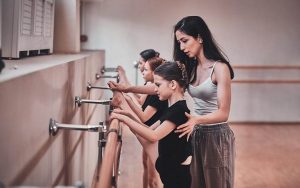
Marketing around kindergartens can blur facts. Regarding Reggio Emilia preschool programs in Singapore, many parents hear contradicting statements on everything from whether or not kids acquire phonics to how teachers evaluate their progress. Misunderstandings make tours confusing and decisions harder. Use these myth busters to separate philosophy from sales talk and to judge a kindergarten in Singapore on evidence you can see and hear.
Myth 1: “Reggio means no structure”
Reggio settings use strong routines that free attention for inquiry. Children arrive, store bags, and join morning meetings with clear roles. Teachers plan provocations and document thinking daily. Structure appears in predictable transitions, visual schedules, and classroom agreements that the community builds together. The difference is that schedules respond to ideas that surface, rather than forcing activities to fit a preset script.
Myth 2: “Children play all day without learning basics”
Play is the vehicle for literacy and numeracy, not a replacement. Teachers notice counting in block work, map letter sounds during name writing, and compare lengths in the atelier. Small-group work targets phonological awareness, handwriting grip, and vocabulary in context. A credible Reggio Emilia preschool in Singapore shows progress through samples and transcripts that tie skills to real investigations.
Myth 3: “Bilingual means two separate classrooms”
Quality bilingual programmes wrap both languages around the same project, so meaning drives words. Co-teachers plan one inquiry, model authentic talk, and switch lead roles across the week. Labels, songs, and documentation appear in both languages as equivalents, not literal scripts. Children connect concepts across languages because adults keep the context continuous.
Myth 4: “Documentation is just pretty walls”
Panels are tools for thinking, not decor. Good documentation shows the question, children’s hypotheses, what changed, and the next step. Families can read it quickly and see evidence of revision. Portfolios include drafts, not only polished posters. Teachers use these traces to plan tomorrow, which stops projects from drifting into theme weeks.
Myth 5: “Older kindergarten years need worksheets to be ready for Primary 1”
Readiness comes from habits of mind. Children who can focus, negotiate, persist, and explain ideas adapt better to new expectations. Reggio teams coach these capacities through long projects, leadership in routines, and frequent reflection. Instead of having kids memorise individual pages, phonics and handwriting are incorporated into meaningful projects that let them apply their skills to new texts.
Myth 6: “Inquiry is messy and unsafe”
Safety and inquiry coexist. Classrooms use real tools with child-sized versions, clear boundaries, and supervision ratios that match tasks. Risk assessments, first-aid training, and hygiene routines sit alongside provocations. Children learn to handle materials respectfully, clean workspaces, and manage wait times. This builds self-regulation and responsibility that worksheets cannot teach.
Myth 7: “It only suits confident, verbal children”
The approach invites different ways to respond. Children can draw, build, act, or speak. Small-group work, quiet spaces, and visual schedules help students who are shy or have sensory issues. Teachers scaffold turn-taking and provide sentence starters so everyone participates. Inclusion is designed, not improvised.
Conclusion
Myths fade when you know what to look for. Purposeful routines, bilingual co-teaching around a common objective, and documentation that advances learning are all hallmarks of a true Reggio Emilia preschool in Singapore. You should hear adults modelling rich vocabulary, asking open questions, and giving children time to test ideas. You should notice calm care routines that build independence, and safe use of real materials that teach responsibility.
Ask to see a recent panel and a child’s portfolio with drafts, sit in a morning meeting, and watch co-teaching during project time. Confirm ratios, outdoor hours, and emotion coaching. Look for family invitations to contribute materials and stories that shape learning, too.
Contact Apple Tree Playhouse to tour a live Reggio classroom, review bilingual documentation portfolios, and take home a starter inquiry kit so your child can try a mini project before enrolment.



